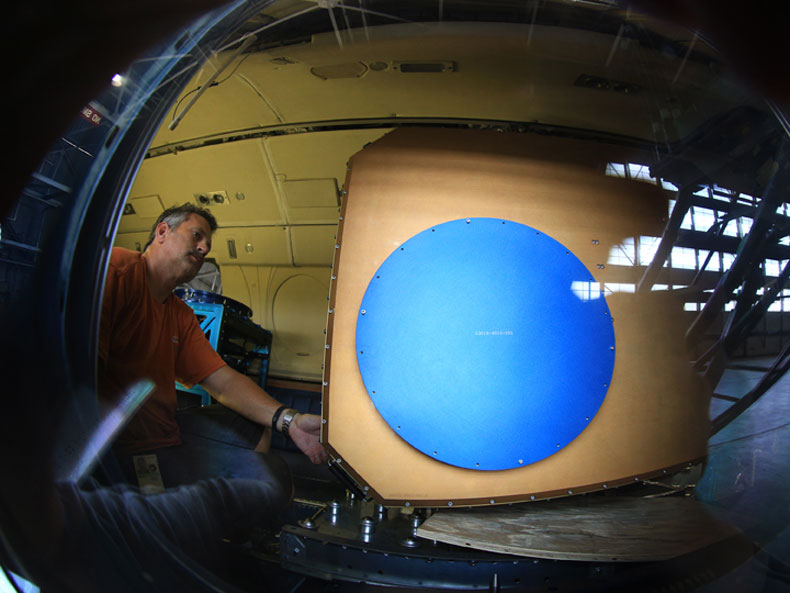ASCENDS CarbonHawk Experiment Simulator (ACES)
First Flights for New High-Altitude CO2 Column Instrument
Andrea Martin, July 2014, andrea.s.martin@nasa.gov
![]()
A new CO2 instrument – the ASCENDS CarbonHawk Experiment Simulator (ACES) – made its first flight onboard a NASA Falcon aircraft on July 1, 2014.
The ESTO Instrument Incubator Program task, led by Michael Obland of NASA’s Langley Research Center (LaRC), has developed a high-altitude airborne instrument for making high precision measurements of column CO2 mixing ratios. The new instrument utilizes component technologies that are scalable to the NASA ASCENDS (Active Sensing of CO2 Emissions over Nights, Days, and Seasons) measurement requirements. The ACES instrument consists of a three-telescope design with five transmitters for measuring both oxygen and CO2. The oxygen wavelengths are provided via hardware built by Exelis with funding by the ESTO Advanced Component Technology program. The instrument’s increased detector bandwidth combined with specialized algorithms will allow researchers using the data to better distinguish cloud and aerosol layers in the column measurements.
Over the coming weeks, ACES will fly approximately eight times for a total of 20 hours. These test and engineering flights will help to give the development team data that can be used to refine the instrument and discern how well the instrument can perform the CO2 column measurement.
The project team hopes to eventually make ACES available for routine, regional measurements of CO2. The instrument might also be utilized for future calibration/validation activities.

Aircraft mechanic Dean Riddick guides the ACES instrument into position onboard the HU-25C aircraft at NASA’s Langley Research Center.
(Image credit: NASA/David C. Bowman)